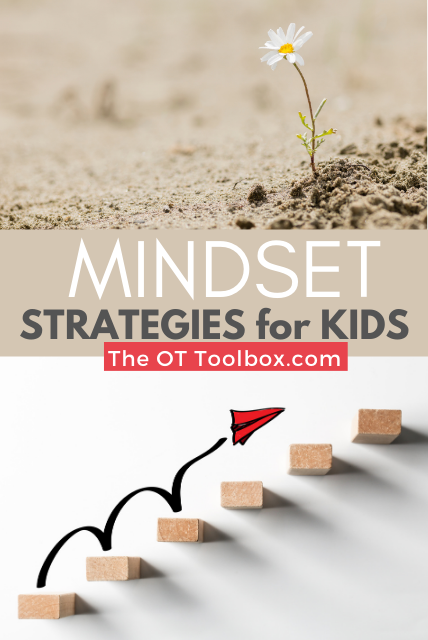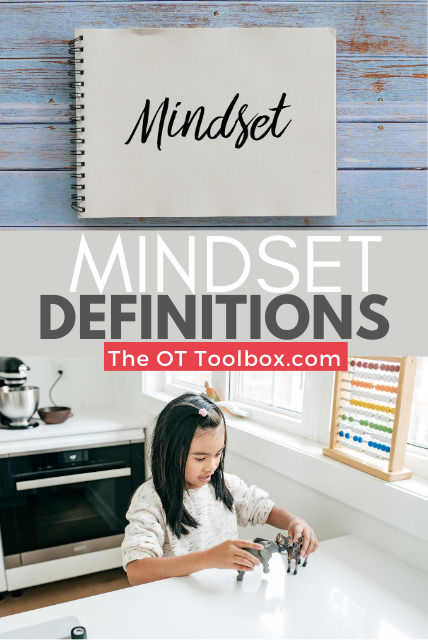This gingerbread man virtual activity is perfect for occupational therapy teletherapy activities, and just one more teletherapy activity that we’ve got lined up for you here on The OT Toolbox. Add this Christmas activity to your therapy plans, along with some gingerbread man activities and maybe making a little gingerbread salt dough for holiday fun with gingerbread themed development and learning!
This is a fun addition to our weekly therapy themes for themed occupational therapy sessions.
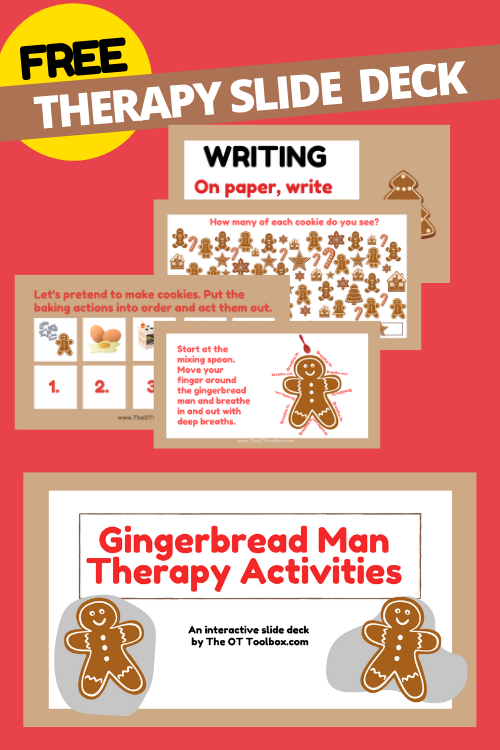
Gingerbread Man Virtual Activity
This slide deck covers various areas with a gingerbread theme:
- Mindfulness
- Fine Motor Skills
- Handwriting
- Gross Motor
- Self-Regulation Check In
Use this list and the gingerbread man activities on this slide deck to help kids develop certain skills in virtual therapy sessions.
CGingerbread man Therapy SLIDE DECK
If you’ve been following The OT Toolbox, then you may have seen a few of our other interactive slide decks. Therapists are LOVING these therapy slide decks for their themed activities that help kids build skills, while in virtual or hybrid environments.
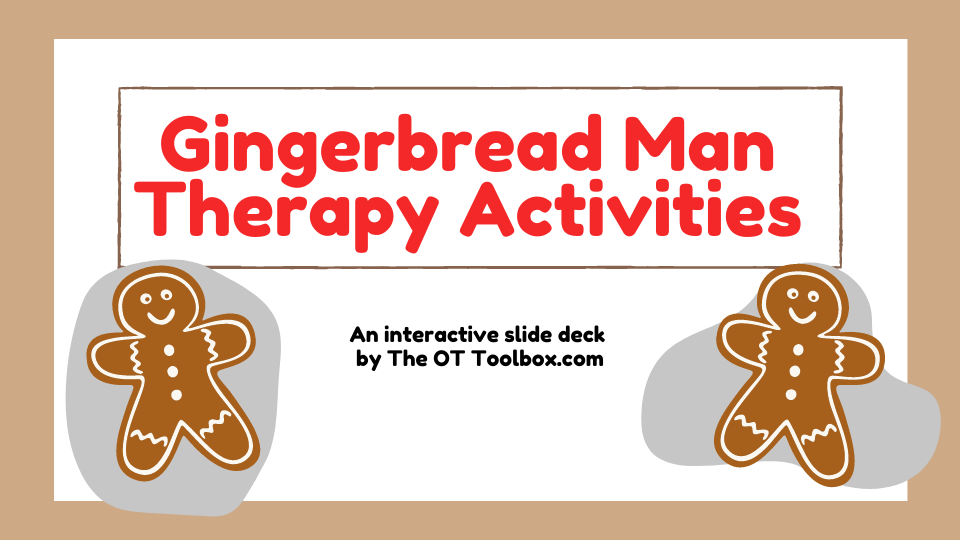
This gingerbread man therapy activity can be adjusted to meet the needs of your clients or students. Use it as an outline and add prompts, or adjust the activities as you need.
Gingerbread Themed Mindfulness Activity
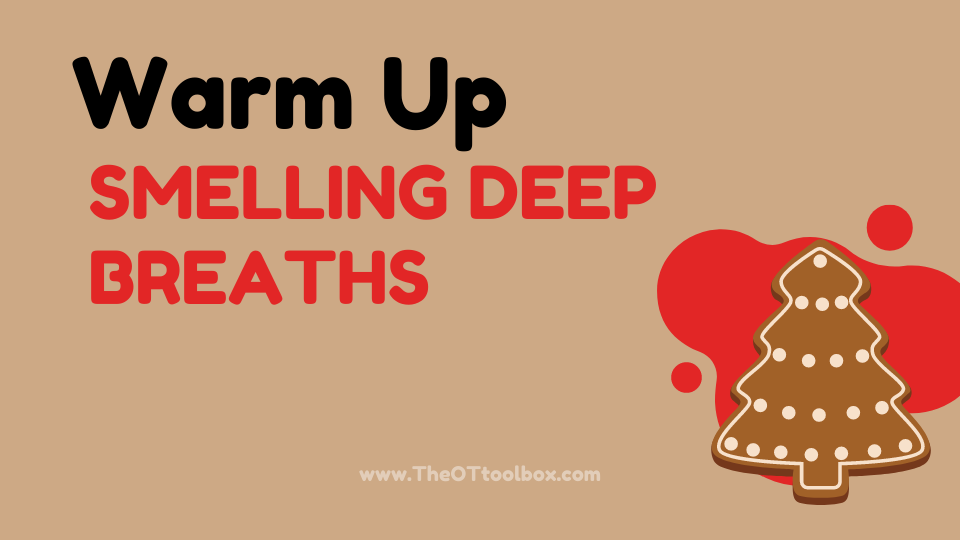
Students can use the gingerbread man image with deep breathing activity to work on deep breaths in and deep breaths out as a mindfulness activity with a gingerbread man theme.
Gingerbread Man Writing Prompts
Included in this therapy slide deck are gingerbread words writing prompts. These are set up as a copying activity for students. Work on letter formation, legibility, and copying skills. Kids can use this to work on printed or cursive writing, based on their specific needs.
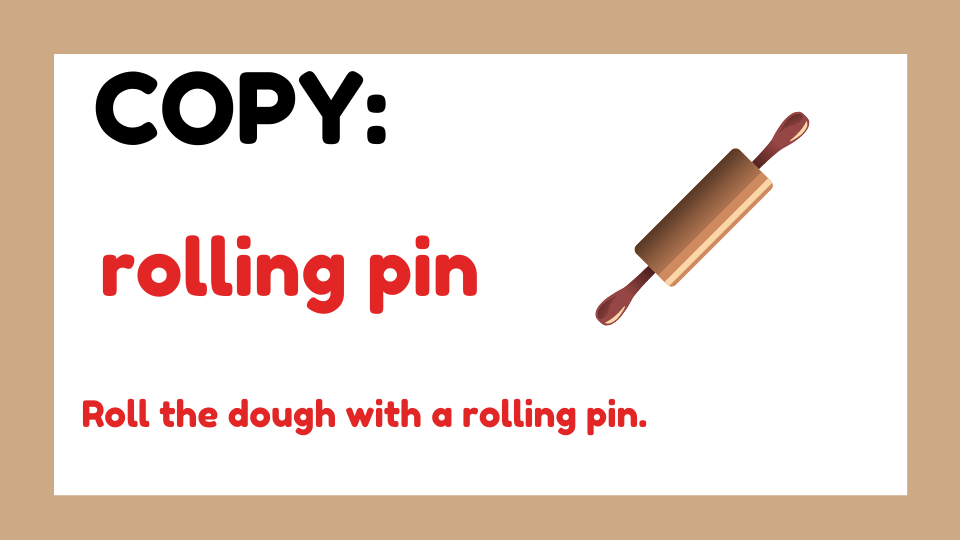
Gingerbread man Visual Perception Activity
Children will love the gingerbread man visual perception activity as they visually scan to count the number of each cookie. Kids can type right into the Google slide deck when they find the correct number of each gingerbread man.
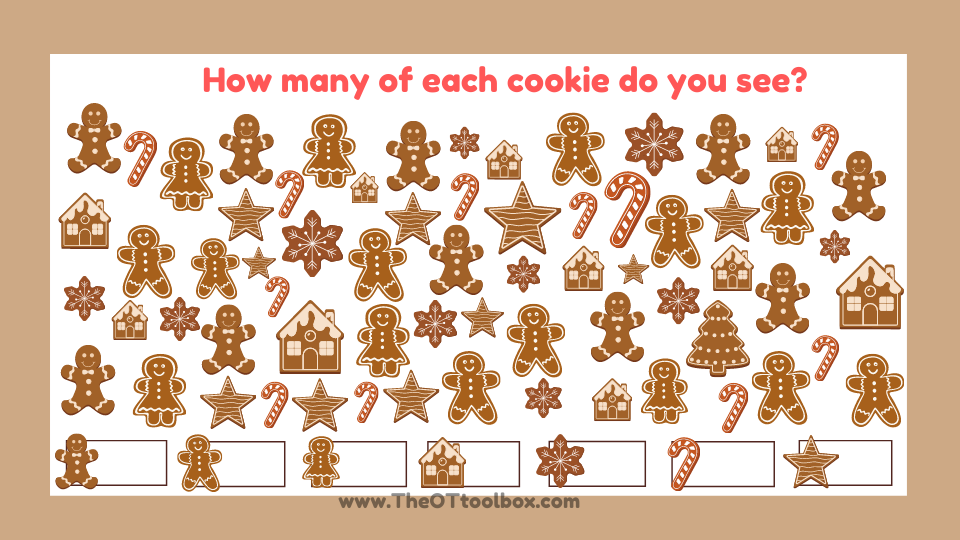
Gingerbread Man Fine Motor Activity
The no-prep gingerbread man fine motor activity asks children to work on fine motor skills such as finger isolation, dexterity, motor planning, and eye-hand coordination as they spell the word “gingerbread man” in sign language.
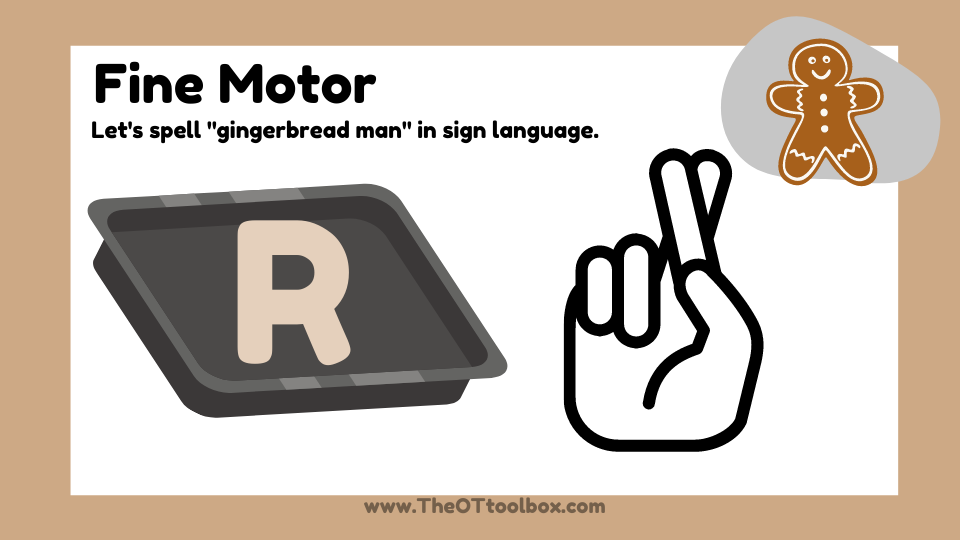
Gingerbread man Gross Motor Activity
Next, kids can work on core strength, gross motor skills, balance, and motor planning with a gingerbread man gross motor activity. This activity asks children to move the movable slide pieces into the correct order. They can then act out the images and work on gross motor skills as well as sequencing.
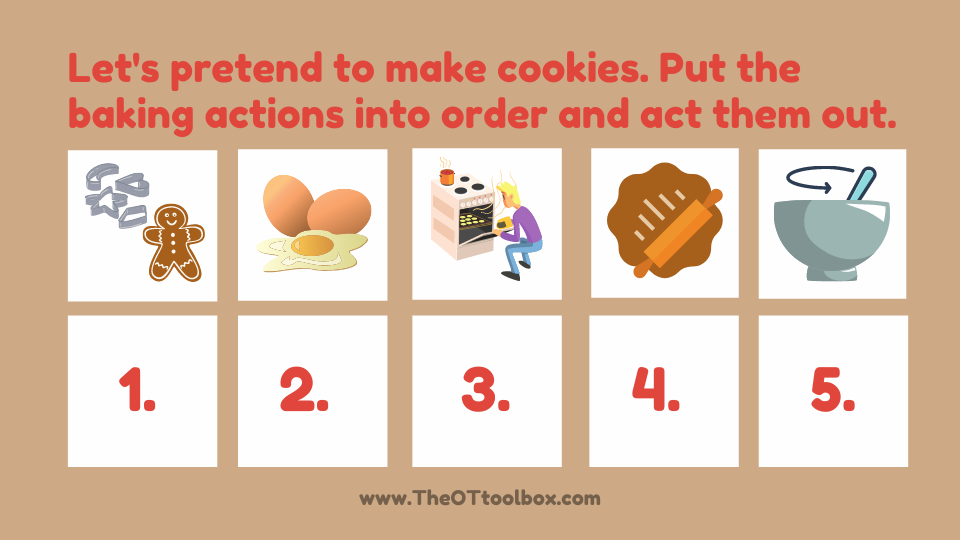
Gingerbread Man Self-Regulation Activity
The final activity in this interactive slide deck is the self-regulation activity where children can move the gingerbread man to identify and match their body’s feelings. Work on self-regulation strategies and coping tools as needed.
Does this looks like a fun way to spend a therapy session while working on skills?
You can grab a copy of this Google slide deck and use it to work on specific skills.
Enter your email address below and you will receive a PDF containing a link to copy the slide deck onto your Google drive. Save that PDF file, because you can come back to it again and again and send it to the kids on your caseload (or classroom) so they can make their own copy on their Google drive.
Please use the copy of the slide deck and do not change the link.
MORE VIRTUAL LEARNING SLIDE DECKS?
Would you like more therapy slide decks? Grab the others to add to your therapy toolbox!
Here is a Community Helpers Theme Slide Deck.
Here is a Football Theme Slide Deck.
Here is a slide deck for a Social Story for Wearing a Mask.
Here is a Space Theme Therapy Slide Deck.
Here is a Therapy Planning Interactive Slide Deck.
Here is a Back to School Writing Activity Slide Deck.
Here is an Alphabet Exercises Slide Deck.
Here is a Self-Awareness Activities Slide Deck.

Colleen Beck, OTR/L has been an occupational therapist since 2000, working in school-based, hand therapy, outpatient peds, EI, and SNF. Colleen created The OT Toolbox to inspire therapists, teachers, and parents with easy and fun tools to help children thrive. Read her story about going from an OT making $3/hour (after paying for kids’ childcare) to a full-time OT resource creator for millions of readers. Want to collaborate? Send an email to contact@theottoolbox.com.


